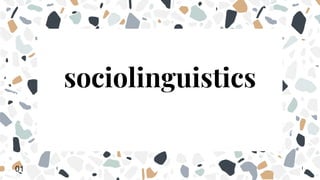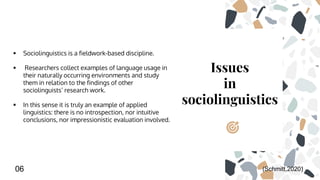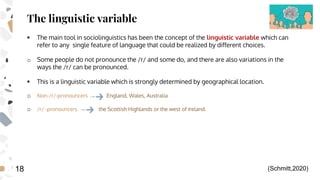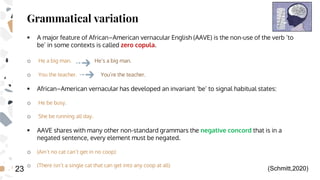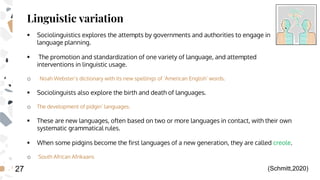This document provides an overview of key concepts in sociolinguistics. It discusses how sociolinguistics studies language variation and change in relation to social factors. Some key points covered include:
- Sociolinguistics examines how social factors like region, age, and gender correlate with linguistic differences.
- Languages have standardized and non-standard varieties, and sociolinguists look at issues of prestige and stigmatization.
- Researchers describe language variation through concepts like idiolects, sociolects, and linguistic variables.
- Phonological, grammatical, and lexical variation are all studied using descriptive tools from the different levels of language.
